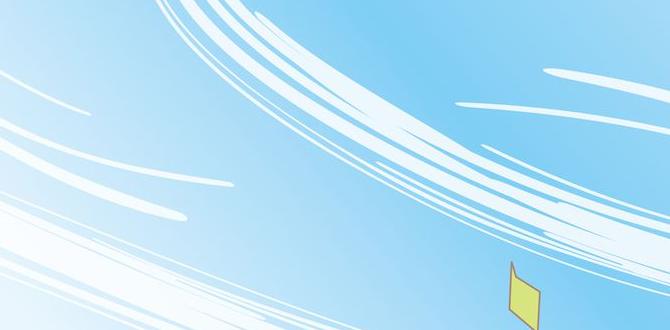Imagine you’re working on a fun project in your garage. You need to use your air tools, but they aren’t working well. Have you ever wondered why? One big reason could be the length of your air hose.
Air hoses come in many lengths, but did you know that longer hoses can cause pressure loss? It’s a surprising fact that many people overlook. If your hose is too long, the air pressure can drop, making your tools less effective. This can be frustrating when you just want to finish your task.
What if you could easily choose the right air hose length to avoid this problem? In this article, we’ll explore how air hose length affects pressure loss. You’ll learn how to maximize performance and save time. So, let’s dive in and get your tools working like new!
Table of Contents
Air Hose Length Vs Pressure Loss: Understanding The Impact Air Hoses Are Essential Components In Various Pneumatic Systems, Used In Industries Ranging From Manufacturing To Automotive Repair. However, The Performance Of These Hoses Can Be Influenced Significantly By Their Length And The Pressure Loss That Occurs Along Them. Understanding The Relationship Between Air Hose Length And Pressure Loss Is Critical For Optimizing Efficiency And Ensuring Effective Operation In Your Applications. Importance Of Hose Length When Selecting An Air Hose, The Length Is A Crucial Factor That Can Impact Air Pressure. As The Air Travels Through The Hose, Some Pressure Is Lost Due To Friction Between The Air And The Inner Walls Of The Hose. This Phenomenon Is Often Referred To As Pressure Drop. The Longer The Hose, The More Potential There Is For Pressure Loss. Calculating Pressure Loss To Determine How Much Pressure Is Lost, One Must Consider Several Factors, Including The Diameter Of The Hose, The Flow Rate Of The Air, The Type Of Fittings Used, And The Overall Length Of The Hose. Various Formulas And Calculators Are Available To Help Determine The Pressure Drop Based On These Parameters. The Role Of Hose Diameter The Diameter Of The Air Hose Also Plays A Crucial Role In Pressure Loss. A Wider Hose Can Reduce The Friction And Pressure Drop, But It May Not Be Practical In All Situations. Conversely, A Narrower Hose May Increase Pressure Loss, Especially Over Long Distances. Practical Applications In Practical Applications, It’S Essential To Balance Hose Length And Diameter To Minimize Pressure Loss While Maintaining The Desired Flow Rate. For Instance, If The Air Supply Needs To Travel A Long Distance, Using A Larger Diameter Hose Can Mitigate Significant Pressure Drops, Ensuring The Effective Functioning Of Pneumatic Tools And Equipment. Conclusion Understanding Air Hose Length Vs Pressure Loss Is Vital For Anyone Using Pneumatic Systems. By Carefully Selecting The Appropriate Hose Length And Diameter, You Can Effectively Manage Pressure Loss And Enhance Overall System Performance. Remember To Consider Your Specific Applications And Requirements When Making Your Choice For Optimal Results.

Air Hose Length vs Pressure Loss
Air hose length matters! The longer your air hose, the more pressure you lose. This happens because air takes time to travel through the hose. Imagine blowing up a balloon; if the tube is too long, it feels harder, right? Choosing the right length keeps your tools working well. A short hose means less pressure drop and better performance. Keep this in mind next time you set up your air tools to get the best results!Understanding Pressure Loss in Air Hoses
Definition of pressure loss in pneumatic systems. Factors influencing pressure loss.Pressure loss in pneumatic systems refers to the drop in air pressure as it travels through hoses and pipes. Picture a race car struggling uphill—just like that car, air loses momentum in long hoses. Factors affecting this include hose length, diameter, and flow rate. For instance, longer hoses mean more distance to travel, leading to more pressure loss. Let’s take a look at an example:
| Hose Length (ft) | Pressure Loss (psi) |
|---|---|
| 10 | 1 |
| 50 | 5 |
| 100 | 10 |
As the length increases, the pressure loss can also multiply. Just remember, a longer hose can mean you’re blowing harder, but achieving less!
Importance of Hose Length in Pressure Dynamics
Explanation of how hose length affects air pressure. Typical pressure loss rate per foot/meters of hose length.Hose length plays a big role in air pressure. As the hose gets longer, the air pressure decreases. This means less power to tools and machines. For every foot (or meter), air pressure can drop significantly. Typical pressure loss is around 0.5 to 2 psi per 100 feet of hose. A short hose is best for keeping air strong and effective.
How does hose length impact pressure loss?
The longer the hose, the more pressure you lose. Choosing the right length helps keep the air strong for your jobs.
Typical pressure loss rates:
- 0-40 feet: Minimal loss
- 40-100 feet: Moderate loss
- 100+ feet: Significant loss
Choosing the Right Hose Length for Efficiency
Balancing functionality and pressure loss. Recommendations for different applications (e.g., DIY, industrial).Choosing the right air hose length can save you from some silly headaches. Too short, and you’ll be running around like a headless chicken. Too long, and you might lose pressure faster than a balloon at a party! Balancing functionality with pressure loss is crucial. For DIY projects, a hose of about 25 feet is ideal. For industrial uses, stick to 50 feet or less to avoid pressure problems. Here’s a quick guide:
| Application | Recommended Hose Length |
|---|---|
| DIY Projects | 25 feet |
| Industrial Uses | 50 feet |
Material and Diameter Impact on Pressure Loss
Comparison of different hose materials and their pressure retention capabilities. Influence of hose diameter on pressure loss.Different materials affect how well hoses keep pressure. For example, rubber hoses are flexible but may lose more pressure than tougher materials like polyurethane. Think of it like pants; stretchy ones might rip easier! Hose diameter also plays a key role. A wider hose can reduce pressure loss, like a pizza with more toppings making it harder to eat. Here’s a simple look at how material and diameter change pressure loss:
| Material | Pressure Retention |
|---|---|
| Rubber | Moderate |
| Polyurethane | High |
| PVC | Low |
Choosing the right material and diameter can help keep pressure high and your tasks easy. After all, nobody likes a hose that wheezes like a tired old dog!
Best Practices for Reducing Pressure Loss
Strategies for minimizing pressure loss in air hose systems. Importance of regular maintenance and inspection.To keep pressure loss at bay, start with a good air hose. Shorter hoses or larger diameters can work wonders. Regularly check those hoses for cracks, leaks, or wear. It’s like giving your air hose a check-up! Did you know that even a small leak can lead to a 20% loss in pressure? That’s a vacation to the beach, but your air compressor is stuck at home! Keep it clean and lubricated; a little oil goes a long way. Always tighten connections too or your air might slip away faster than a slippery eel!
| Strategy | Effectiveness |
|---|---|
| Use shorter hoses | Highly effective |
| Inspect regularly | Essential |
| Tighten connections | Very effective |
| Lubricate components | Moderately effective |
Real-World Applications: Case Studies
Case studies demonstrating the impact of hose length on pressure loss in different settings. Insights gained from adjustments made to hose lengths in practical scenarios.In real-world situations, the length of an air hose can change how much pressure is lost. Here are some case studies that show this impact:
- A construction site found that a longer hose reduced pressure at the tool. Shortening the hose helped maintain the needed pressure.
- A car shop learned that using a shorter hose improved air tool performance during repairs.
- A factory adjusted hose lengths and noticed better efficiency in their machines, leading to greater output.
Making changes to hose lengths can lead to big improvements in pressure and performance.
What is the significance of hose length on pressure loss?
Hose length directly affects pressure levels. Longer hoses lose more pressure. This can slow down tools and make tasks harder. Keeping the right length boosts efficiency and saves time.
Frequently Asked Questions
Common questions about air hose length and pressure loss. Helpful tips for users considering different hose lengths and setups.Many people wonder about air hoses. One common question is, “Does hose length really affect pressure?” The answer is, yes! Longer hoses can lose more pressure. Imagine trying to sip juice through a really long straw—it takes more effort! Another question is, “What length is best for my needs?” A hose around 50 feet works well for most tasks. But if you need to cover a large area, a longer hose might be necessary. Just remember, shorter hoses often mean less pressure loss.
| Question | Answer |
|---|---|
| How does hose length affect pressure? | Longer hoses can lose more air pressure over distance. |
| What length is ideal? | About 50 feet is great for most uses. |
Conclusion
In conclusion, air hose length impacts pressure loss. Longer hoses can reduce pressure, affecting performance. You need the right size for your project. Always consider the hose length when planning. For better results, choose a shorter hose or one with a larger diameter. To learn more, check out guides on air hose selection and pressure loss calculations. Happy experimenting!FAQs
Sure! Here Are Five Related Questions On The Topic Of Air Hose Length Versus Pressure Loss:Air hoses are like long straws for air. The longer the hose, the more air you lose. This is called pressure loss. So, if you use a really long hose, it can make your tools work less hard. Try to use a shorter hose if you can!
Sure! Please give me the question you want answered, and I’ll be happy to help.
How Does The Length Of An Air Hose Affect The Pressure Loss In A Compressed Air System?The longer the air hose, the more pressure we lose. This happens because the air has to travel farther. If you use a short hose, the air stays strong and flows better. If you need a lot of air, keeping the hose short helps. So, it’s smart to use shorter hoses when you can!
What Factors Contribute To Pressure Loss In An Air Hose Aside From Its Length?Pressure loss in an air hose can happen for a few reasons. First, if the hose has bends or kinks, it slows the air down. Second, if the hose is really narrow, less air can fit through. Dust or dirt inside the hose can also block the air and make pressure drop. Lastly, if the connections are loose, air might escape and cause pressure loss.
How Can The Diameter Of An Air Hose Influence Pressure Loss Compared To The Length?The diameter of an air hose is how wide it is. A wider hose lets air flow more easily, which means less pressure loss. If the hose is long, you lose more pressure as air travels through it. So, having a wider hose is better for keeping pressure high, even if the hose is long. This helps the air work better when you use it.
Are There Specific Calculations Or Formulas Used To Determine The Pressure Loss In An Air Hose Based On Its Length And Diameter?Yes, there are formulas that help us figure out how much pressure we lose in an air hose. We look at the hose’s length and diameter, which is how wide it is. A longer or thinner hose can make pressure drop more. These calculations help us understand how much air flows through the hose. Using them can help us choose the right hose for our needs.
What Are Some Recommended Practices To Minimize Pressure Loss In Longer Air Hoses Used In Pneumatic Applications?To reduce pressure loss in long air hoses, use wider hoses. A wider hose allows air to flow more easily. Keep your hoses straight and avoid kinks. Make sure all connections are tight so air doesn’t leak out. Finally, check your hoses regularly for any holes or damage.






